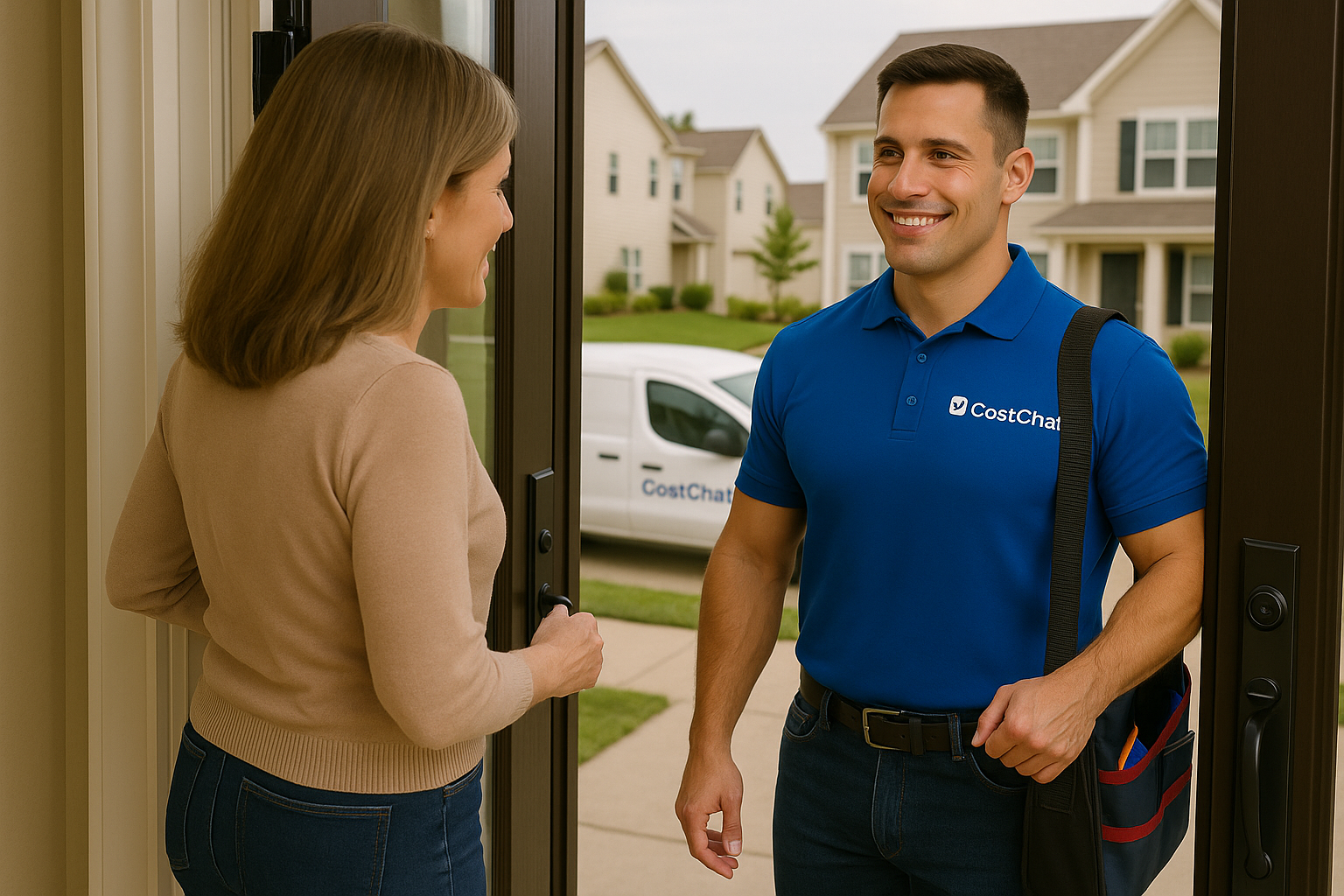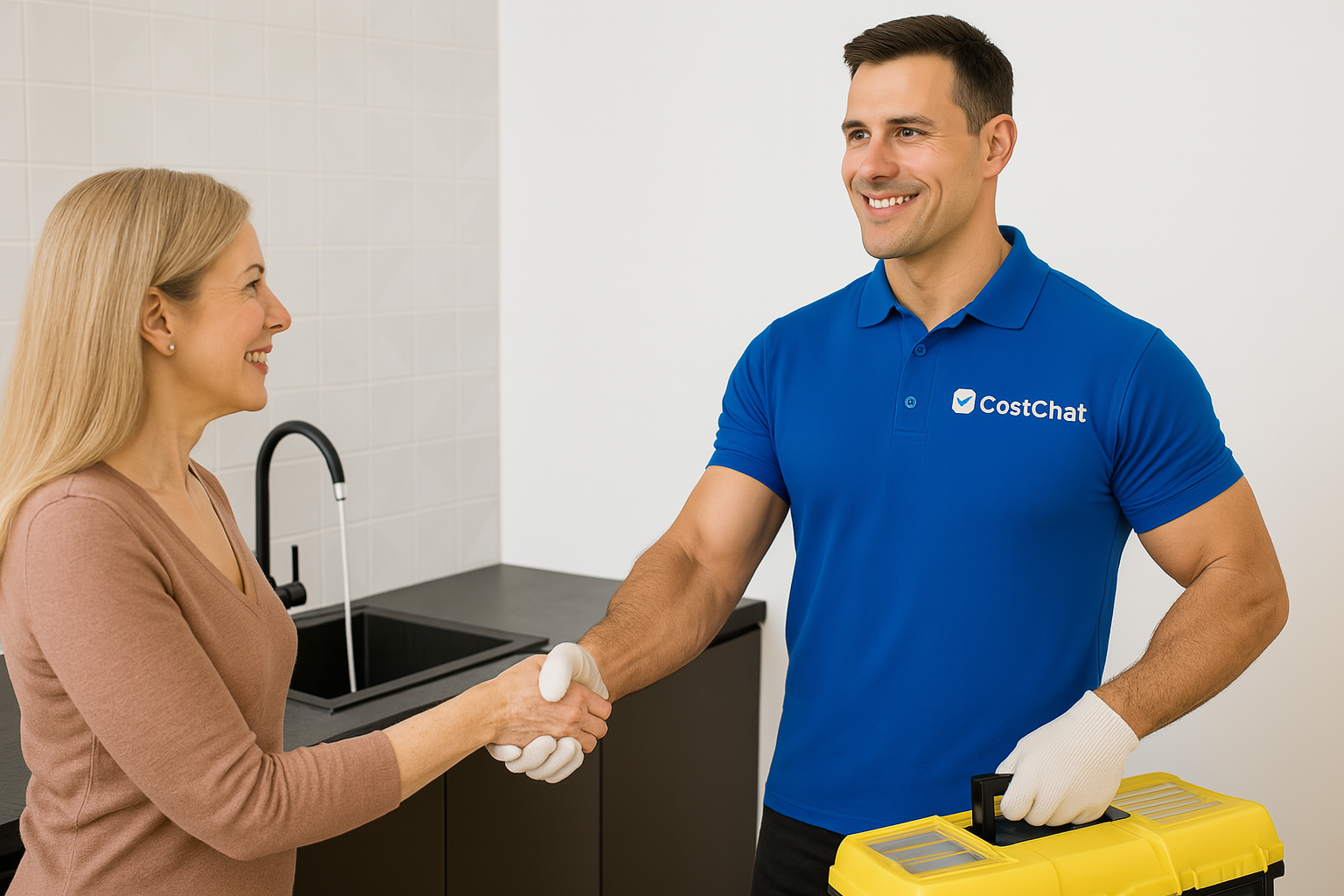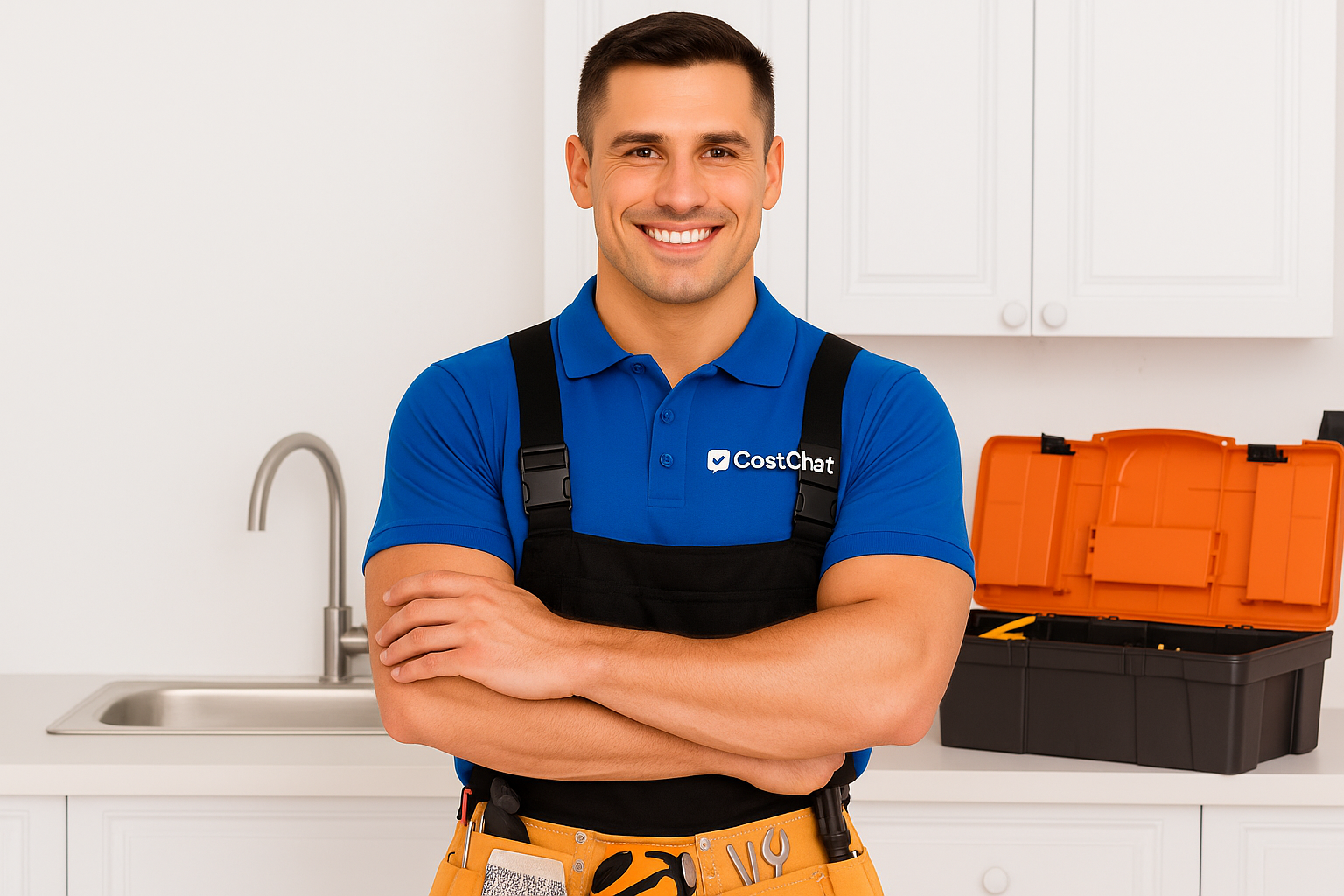
Fast, Reliable Toilet Repair and Installation Pros in Cincinnati, OH
How to Hire Top Rated Toilet Repair and Installation Pros in Cincinnati, OH
Get a Free Online Estimate
Share your project details and receive a free online estimate from top-rated local pros. Not sure what it should cost? Check our Cost Guide.
Get EstimateCompare Local Quotes
View multiple free online quotes side by side. Use our Price Guide to understand labor rates, materials, and service fees before you hire.
Compare NowBook Best Top Rated Pros
Choose a licensed pro with confidence. Lock in your date after reviewing your free estimate and browsing our expert Cost Guide for peace of mind.
Book NowDid You Know?
74% ⚠️
of homeowners face surprise costs and delays — mostly from hiring unvetted pros. Don’t risk it. Hire trusted experts today.
Hire Top Rated & Verified ProsWork With Verified & Trusted Pros 🛡️
Save time, avoid costly mistakes, and experience reliable, top-quality service for every home project. Book now for priority scheduling and peace of mind.
Hire a Top Rated ProGet Instant Online Estimate of Toilet Repair and Installation in
🔎 CostChat Online Cost Estimator
Describe your project and location to get an instant estimate.
Your Comprehensive Guide to Toilet Repair and Installation in Cincinnati, OH
As a Cincinnati homeowner, you understand the importance of a comfortable and efficiently running home. When your toilet isn't performing as it should, it can disrupt your daily life and lead to significant inconveniences. This guide is crafted specifically for you, the Cincinnati resident, offering expert insights into toilet repair and installation, addressing local challenges, and empowering you to make informed decisions about maintaining your home's essential fixtures.
Table of Contents
- Cincinnati, OH's Unique Toilet Repair and Installation Landscape: Why Local Expertise Matters
- Neighborhood Hotspots: Micro-Local Toilet Repair and Installation Risks & Solutions
- Common Problems & Triggers for a Professional Toilet Repair and Installation Call
- Navigating Cincinnati, OH Regulations: Permits, Code & Professional Licensing
- Maximize Your Savings: Cincinnati, OH Toilet Repair and Installation Rebates & Incentives
- Choosing Your Cincinnati, OH Toilet: Models, Sizing & Smart Features
- Understanding the Cost of Toilet Repair and Installation in Cincinnati, OH
- Hiring Cincinnati, OH's Top-Rated Toilet Repair and Installation Professionals: Your Action Plan
- FAQs About Toilet Repair and Installation in Cincinnati, OH
Cincinnati, OH's Unique Toilet Repair and Installation Landscape: Why Local Expertise Matters
The Age & Character of Cincinnati, OH Homes: A Toilet Repair and Installation-Related Time Capsule
Cincinnati's housing stock is a rich tapestry, reflecting decades of growth and architectural evolution. This diversity means many homes, particularly those built before the 1950s, are equipped with plumbing systems that may be showing their age. Understanding the era of your home is crucial for toilet repair and installation, as older materials can present unique challenges.
- Pre-1950s Homes: Characterized by styles like Craftsman bungalows and early Colonial Revivals, these homes often feature original plumbing infrastructure. Many of these homes still have galvanized steel pipes and cast iron drains. Galvanized pipes are prone to internal corrosion and mineral buildup, which can restrict water flow and lead to leaks. Cast iron drains, while durable, can corrode and cause blockages or cracks over time. These issues can directly impact the performance and lifespan of toilet fixtures.
- Mid-20th Century Homes (1950s-1970s): Post-war suburban homes from this era might have plumbing that, while potentially updated from earlier materials, can still be subject to wear and tear. Issues like aging seals or connections could become points of failure.
- Modern Homes: Newer constructions generally utilize more resilient materials like PEX or copper, which are less susceptible to the issues found in older homes. However, proper installation and adherence to current codes are still paramount.
Notable neighborhoods such as Hyde Park, Oakley, and Mount Adams are known for their older, charming homes, where the legacy plumbing infrastructure is a common consideration during any renovation or repair, including toilet services.
Cincinnati, OH's Environmental & Utility Factors & Climate Impact on Your Toilet Components
Cincinnati's climate and water supply play a significant role in the longevity and performance of your toilet and its components.
- Water Supply & Quality: Greater Cincinnati Water Works (GCWW) supplies water sourced from the Ohio River and the Great Miami Buried Valley Aquifer. While GCWW employs rigorous multi-stage filtration and treatment processes, the water is classified as moderately hard. This moderate hardness means that mineral scale can build up over time in toilet tanks, bowls, and internal mechanisms. This buildup can affect flushing efficiency, lead to unsightly stains, and potentially contribute to premature wear of rubber seals and flush valves.
- Climate Impact: Cincinnati experiences a humid continental climate.
- Cold Winters & Freeze-Thaw Cycles: While less common for indoor toilet plumbing, extreme cold can cause pipes to freeze if not properly insulated, potentially leading to bursts. This is a greater concern for external plumbing or toilets in unheated spaces like garages.
- Warm, Wet Summers & Soil Conditions: The region's clay-heavy soil is prone to expansion and contraction with moisture changes. This ground movement can stress underground supply lines or even foundation plumbing, potentially leading to leaks that could indirectly affect toilet function or water supply to fixtures.
- Seasonal Rainfall: Variable rainfall can contribute to soil saturation, further impacting foundations and potentially stressing plumbing connections over time.
Regular maintenance and water softening options can help mitigate the effects of hard water, ensuring your toilet operates smoothly.
 Request a Quote
Request a Quote
Neighborhood Hotspots: Micro-Local Toilet Repair and Installation Risks & Solutions
Cincinnati's diverse neighborhoods present a range of micro-climates and infrastructure that can influence toilet performance and maintenance needs.
Neighborhoods We Serve in Cincinnati, OH
️ Top Neighborhoods:
- Downtown
- Over-the-Rhine
- Mount Adams
- Clifton
- Corryville
- Hyde Park
- Walnut Hills
- East Walnut Hills
- Mount Lookout
- Mount Washington
- Avondale
- Northside
- College Hill
- Pendleton
- West End
Top ZIP Codes Covered:
- 45202
- 45203
- 45204
- 45205
- 45206
- 45207
- 45208
- 45209
- 45211
- 45212
- 45213
- 45214
- 45216
- 45219
- 45220
Wherever you’re located in Cincinnati, OH, our team of trusted local pros is nearby—ready to deliver fast, reliable, and top-rated service. Whether you’re in the heart of downtown or a quiet suburb, we’ve got you covered.
While specific issues can vary, understanding common patterns in different areas helps in proactive maintenance:
- Historic Districts (e.g., Mount Adams, parts of Clifton): Homes here often feature original plumbing. Toilet leaks, phantom flushing, or reduced water pressure might be linked to aging pipes or outdated tank components. Solutions include full toilet replacements with modern, water-efficient models or targeted repair of internal tank mechanisms.
- Older Suburban Neighborhoods (e.g., Hyde Park, Oakley): These areas may have seen multiple renovations. Sometimes, plumbing modifications from different eras can create compatibility issues or hidden weaknesses. Checking for proper venting and ensuring supply lines are in good condition are key.
- Areas near the Ohio River: While less direct for toilets, susceptibility to flooding in some low-lying areas might necessitate backflow preventers on main water lines, ensuring no contaminants enter the home's plumbing, indirectly protecting all fixtures.
Common Problems & Triggers for a Professional Toilet Repair and Installation Call
Recognizing the signs that your toilet needs professional attention is key to preventing bigger issues. Many common toilet problems in Cincinnati homes can be linked to age, water quality, or simple wear and tear.
- Constant Running or Phantom Flushing: This is often caused by a worn-out flapper valve or a faulty fill valve in the tank. Mineral buildup from Cincinnati's moderately hard water can accelerate the wear on these rubber components. A typical toilet's internal tank components, like the fill valve and flapper, usually last 5-10 years before needing replacement.
- Weak Flush or Incomplete Bowl Clearing: This can be due to low water levels in the tank, a partially clogged rim jet, or sediment buildup in the trapway. Mineral deposits from GCWW water can contribute to these blockages.
- Leaking at the Base (Wax Ring Failure): If you notice water pooling around the base of your toilet, it typically indicates a failed wax ring seal. This seal can degrade over time due to the natural settling of older homes or issues related to foundation movement, which can occur in Cincinnati due to its clay soils.
- Cracked Tank or Bowl: While less common, a crack can result from impact or significant temperature fluctuations. If this occurs, replacement is usually the only option.
- Running Toilet: Beyond the flapper, a malfunctioning fill valve that allows the tank to overfill can lead to constant running through the overflow tube.
If you encounter any of these issues, it's wise to consult a professional. For more information on identifying these problems, check out our Warning Signs Guide. Remember, prompt attention to small issues can save you from water damage and higher repair bills.
 Request a Quote
Request a Quote
Navigating Cincinnati, OH Regulations: Permits, Code & Professional Licensing
Ensuring your toilet repair or installation project complies with local regulations is crucial for safety and legal compliance in Cincinnati.
- Permitting Authority: Plumbing work in Cincinnati is overseen by the Cincinnati Building and Inspections Department. For significant plumbing projects, including new toilet installations or major repairs that affect the water supply or drainage lines, a permit is typically required. You can find more information on the Cincinnati Building and Inspections Department website.
- Governing Code: Cincinnati adheres to the Ohio Plumbing Code, which is largely based on the International Plumbing Code (IPC) but includes local amendments tailored to regional conditions. These amendments may cover aspects like frost protection for pipes and water conservation measures.
- Required Inspections: Depending on the scope of work, inspections may be necessary to ensure the installation meets code requirements. This could include inspections of rough-in plumbing for new installations or checks on specific components after repairs. Your permit documentation will detail any required inspections.
- DIY vs. Professional: While minor repairs like replacing a flapper might be a DIY task, more involved installations or repairs that require tampering with water supply lines or drainage systems are best left to professionals. For guidance on when DIY is appropriate, consult our When To Consider DIY Guide. Improper installation can lead to leaks, water damage, and code violations.
- Contractor Licensing: All plumbers performing work in Ohio must be licensed by the Ohio Construction Industry Licensing Board (OCILB). You can verify a plumber's license and ensure they are registered and in good standing through the Ohio Department of Commerce license lookup portal. Always ask for proof of license and insurance before hiring.
Maximize Your Savings: Cincinnati, OH Toilet Repair and Installation Rebates & Incentives
Investing in new toilets or efficient plumbing upgrades can be made more affordable through various rebate and incentive programs available to Cincinnati homeowners.
- Local Utility Programs: Greater Cincinnati Water Works (GCWW) often promotes programs and rebates designed to encourage water conservation. These can include incentives for installing high-efficiency toilets that use less water per flush.
- State and Federal Initiatives: Keep an eye on initiatives from the Ohio Environmental Protection Agency (Ohio EPA) or federal energy efficiency programs that might offer tax credits or rebates for water-saving fixtures or significant plumbing upgrades.
- Qualifying Products: Rebates typically apply to WaterSense labeled toilets, which are certified by the EPA to use at least 20% less water than the standard 1.6 gallons per flush, while still meeting high-performance standards.
- Combinable Savings: It's often possible to combine utility rebates with manufacturer discounts or federal tax credits, significantly reducing the overall cost of a new toilet installation.
- Bonus Tip: Strategically time your toilet replacement or upgrade to coincide with the release of new rebate programs or seasonal promotions offered by manufacturers and local utilities. Check the GCWW website and the Ohio EPA's water conservation pages for the most current information.
For more ways to save on your home projects, explore our Saving Tips Guide.
 Request a Quote
Request a Quote
Choosing Your Cincinnati, OH Toilet: Models, Sizing & Smart Features
Selecting the right toilet involves considering efficiency, performance, and suitability for your Cincinnati home.
- Types of Toilets:
- Gravity-Fed Toilets: The most common type, relying on gravity to move water from the tank to the bowl. They are generally reliable and less complex.
- Pressure-Assisted Toilets: Use compressed air to create a stronger flush. They are often more powerful but can be noisier and more expensive.
- Dual-Flush Toilets: Offer two flush options (e.g., a lower volume for liquid waste, a higher volume for solid waste) to conserve water. These are excellent for reducing water bills in the long run.
- Sizing & Application for Cincinnati Homes: For most Cincinnati homes, standard two-piece toilets are a popular and practical choice. Consider the space available in your bathroom. For older homes with potentially lower water pressure, a gravity-fed toilet with a good flush mechanism is often recommended. For families aiming to reduce water consumption, dual-flush models are an excellent investment.
- Key Toilet Considerations for Cincinnati Homes:
- Water Efficiency: Look for EPA WaterSense labeled toilets to save water and potentially lower your GCWW utility bills.
- Flush Performance: Check MaP (Maximum Performance) scores, which indicate how well a toilet clears waste.
- Bowl Height: Standard height (around 15 inches) or comfort height (around 17-19 inches) options are available. Comfort height is beneficial for taller individuals or those with mobility issues.
- Durability and Material: Most toilets are made of vitreous china, which is durable and easy to clean.
- Installation Complexity: Consider if your existing plumbing is standard or if unique modifications might be needed due to older home infrastructure.
Understanding the Cost of Toilet Repair and Installation in Cincinnati, OH
The cost of toilet repair and installation in Cincinnati, OH can vary based on the service needed, the complexity of the job, and the materials used. Here's a general breakdown to help you budget:
- Minor Repairs (e.g., Flapper Replacement, Fill Valve Adjustment): These are typically the least expensive, often ranging from $75 to $200, depending on whether it's a DIY job or a service call.
- Toilet Repair (e.g., Replacing a Flush Valve, Fixing a Leak): More involved repairs, especially those requiring a service visit, can cost between $150 and $350.
- Toilet Installation (Standard Replacement): For a straightforward replacement of an existing toilet with a new unit, expect costs from $250 to $600. This usually includes the toilet itself (which can range from $100-$400+), labor, and basic materials.
- Slab Leak Repair or Repiping Affecting Toilets: If the issue is related to under-slab leaks or requires significant repiping due to older infrastructure in homes built before the 1950s, costs can escalate significantly, potentially running into thousands of dollars.
Factors Influencing Costs:
- Complexity of Installation: Moving a toilet to a new location or dealing with difficult access points will increase labor costs.
- Material Quality: High-efficiency or specialty toilets will naturally cost more upfront.
- Older Plumbing Systems: Homes with galvanized pipes or deteriorating drains may require additional work or specialized fittings, increasing costs.
- Neighborhood: While labor rates are generally competitive across Cincinnati, some areas with challenging access or older infrastructure might see slight variations.
- Permits: If a permit is required for the work, there will be an associated fee.
It's always recommended to get multiple detailed quotes from licensed Cincinnati plumbers to ensure you are getting fair pricing and a clear understanding of the scope of work.
 Request a Quote
Request a Quote
Hiring Cincinnati, OH's Top-Rated Toilet Repair and Installation Professionals: Your Action Plan
Choosing the right professional for your toilet repair or installation is vital for ensuring quality work and long-term satisfaction. Here’s how to approach it:
- Verify Licensing and Insurance: Ensure the plumber is licensed by the Ohio Construction Industry Licensing Board (OCILB) and carries adequate liability insurance. You can verify licenses at licenses.com.ohio.gov/olims/Default.aspx.
- Check Local Reviews and Reputation: Look for plumbers with a strong track record of positive reviews on local directories and Google. Pay attention to comments regarding professionalism, timeliness, and quality of work.
- Ask Hyper-Local Questions: Tailor your questions to Cincinnati's specific context. For example:
- "Have you worked on homes with original plumbing from the [mention your home's era, e.g., 1940s] in neighborhoods like [mention your neighborhood, e.g., Oakley]?"
- "How do you handle potential water pressure fluctuations common in older Cincinnati homes?"
- "Are you familiar with GCWW's water quality and its potential impact on fixture longevity?"
- Get Multiple Detailed Quotes: Obtain written estimates from at least three different licensed plumbers. Ensure the quotes clearly outline the scope of work, materials to be used, labor costs, and any potential additional charges.
- Prioritize Written Contracts: A detailed contract should cover the scope of work, start and completion dates, payment schedule, warranty information, and a clause for any unforeseen issues.
- Avoid Common Pitfalls: Steer clear of extremely low bids that might indicate cut corners or lack of experience. Always trust your gut feeling about a contractor's professionalism. For more insights, read our Mistakes to Avoid Guide.
FAQs About Toilet Repair and Installation in Cincinnati, OH
In Cincinnati, especially in homes built before the 1950s, common issues include leaks from worn wax rings due to settling foundations, phantom flushing or running toilets caused by mineral buildup affecting internal tank components like flappers and fill valves, and reduced flushing power due to sediment in the pipes or rim jets. These are often exacerbated by the presence of galvanized steel pipes and cast iron drains, which can corrode over time.
Greater Cincinnati Water Works supplies moderately hard water, which can lead to mineral scale buildup inside your toilet tank and bowl. This can affect flush performance and the longevity of rubber seals. To combat this, regular cleaning with appropriate cleaners and considering periodic water softener maintenance for your home's entire plumbing system can help maintain y
